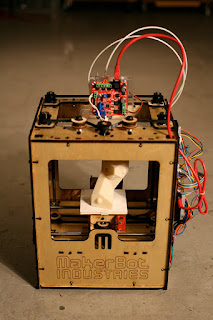High Performance Computing (HPC) consists of two main types
of computing platforms. There are shared memory platforms that run a single
operating system and act as a single computer, where each processor in the
system has access to all of the memory. The largest of these available on the
market today are Atos’ BullSequana S1600 and HPE’s Superdome, which max out at
16-processors sockets and 24TB of memory. Coming out later this year, the
BullSequana S3200 will supply 32-processor sockets and 48TB of memory.
The other type of HPC is called a distributed memory system
and it links multiple computers together by a software stack that allows the
separate systems to pass memory from one to another, utilizing a message
passing library. These systems first came about to replace the expensive shared
memory systems with commodity computer hardware, like your laptop or desktop
computer. Standards for how to share the memory through message passing were
first developed about three decades ago and formed a new computing industry.
These systems made a shift from commodity hardware to specialized platforms
about twenty years ago with companies like Cray, Bull (now a part of Atos), and
SGI leading the pack.
Today the main specialized hardware manufactures are Atos
with their Direct Liquid Cooled Sequana XH2000 and HPE with a conglomerate of
technologies from the acquisition of both SGI and Cray in the last few years.
It is unclear in the industry which product line will be kept through the
mergers. HPC used to be purely a scientific research platform used by the likes
of NASA and university research programs, but in recent years it has made a
shift to being used in nearly every industry, from movies, fashion and
toiletries to planes, trains, and automobiles.
The newest use cases for HPC today are in data analytics,
machine learning, and artificial intelligence. However, I would say the leading
use case for HPC worldwide is still in the fields of computational chemistry
and computational fluid dynamics. Computational fluid dynamics studies how
fluid or material move or flow through mechanical systems. It is used to model
things like how a detergent pours out of the detergent bottle, how a diaper
absorbs liquids, and how air flows through a jet turbine for optimal
performance. Computational chemistry uses computers to simulate molecular
structures and chemical reaction processes, effectively replacing large
chemical testing laboratories by large computing platforms.
The two latest innovations that are causing a shift in HPC
are cloud computing, Google Cloud Services, Amazon Web Service, Microsoft
Azure, and Quantum Computing, which is the next generation of computers that
are still under development and are not likely to be easily available for ten
years or more.
If you are interested in learning more about HPC, there are
a couple of great places to start. The University of Oklahoma hosts a conference
that is free and open to the public every September. This year the event is
being held on Sept. 24 and 25; more information about the event can be found at
http://www.oscer.ou.edu/Symposium2019/agenda.html. There is also professional
training available from the Linux Cluster Institute (http://www.linuxclustersinstitute.org).
Scott Hamilton, Senior Expert in HPC at Atos has also published a book on the
Message Passing Interface designed for beginners in the field. It is available
on Amazon through his author page (http://amazon.com/author/techshepherd).
There are also several free resources online by searching for HPC or MPI.



